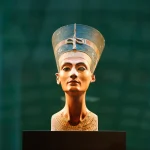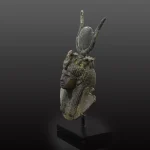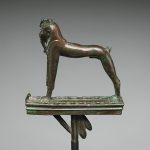Statuette of Ptah, God of Creation and Craftsmanship
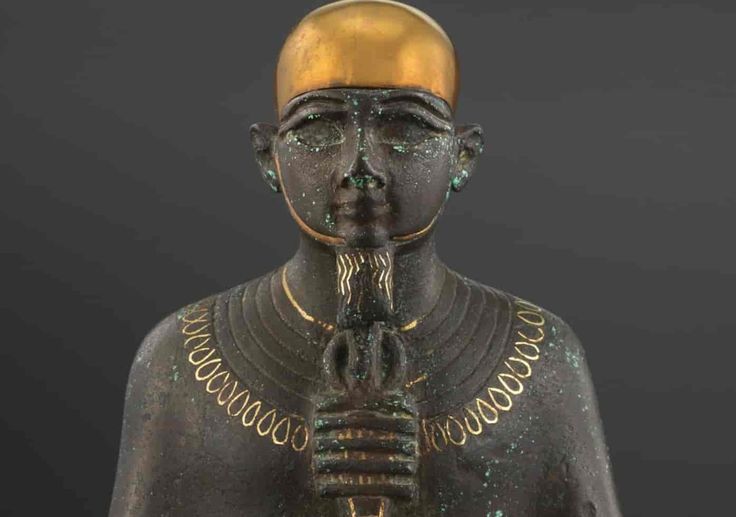
The upper part of a bronze and gold statuette representing the god Ptah, dating to the Third Intermediate Period (c. 1070–713 BCE).

Ptah was a major deity in ancient Egypt, revered both as a creator god and as one who listened to the prayers of individuals. He also served as the divine patron of craftsmen.
This statuette (FGA-ARCH-EG-0464), measuring 26.5 centimeters in height, is preserved today in the Fondation Gandur pour l’Art, Geneva, Switzerland.
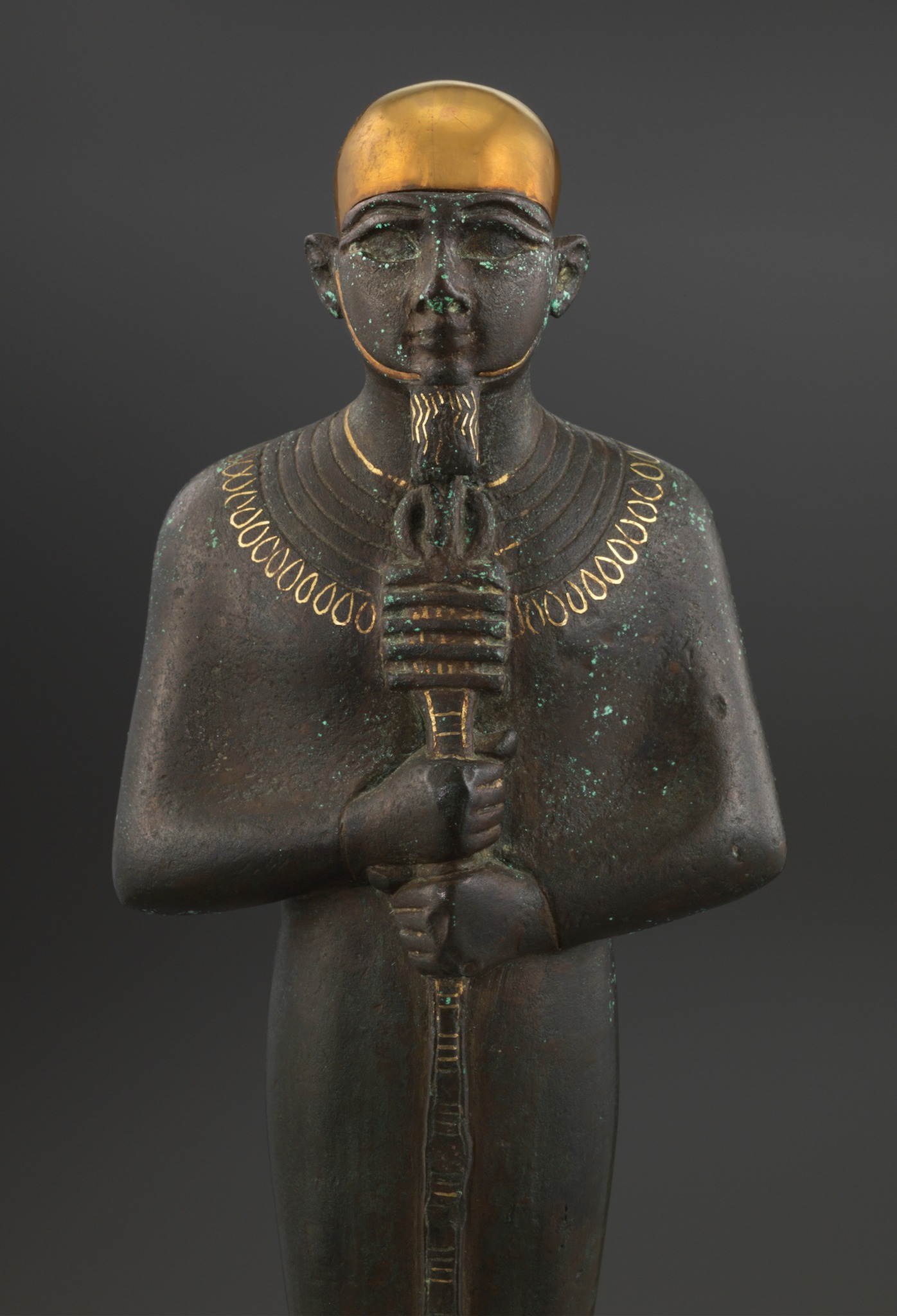
Ptah, whose breath was believed to have given life to all things at the dawn of creation, held a central place in Egyptian religion. The very name “Egypt” has roots connected to him: the ancient city of Memphis, once Egypt’s capital, was originally called “the temple of the soul of Ptah.” The Greeks later shortened this title and used it to designate the entire country, ultimately giving rise to the modern English word Egypt, in which the god’s name still echoes in the final two letters.
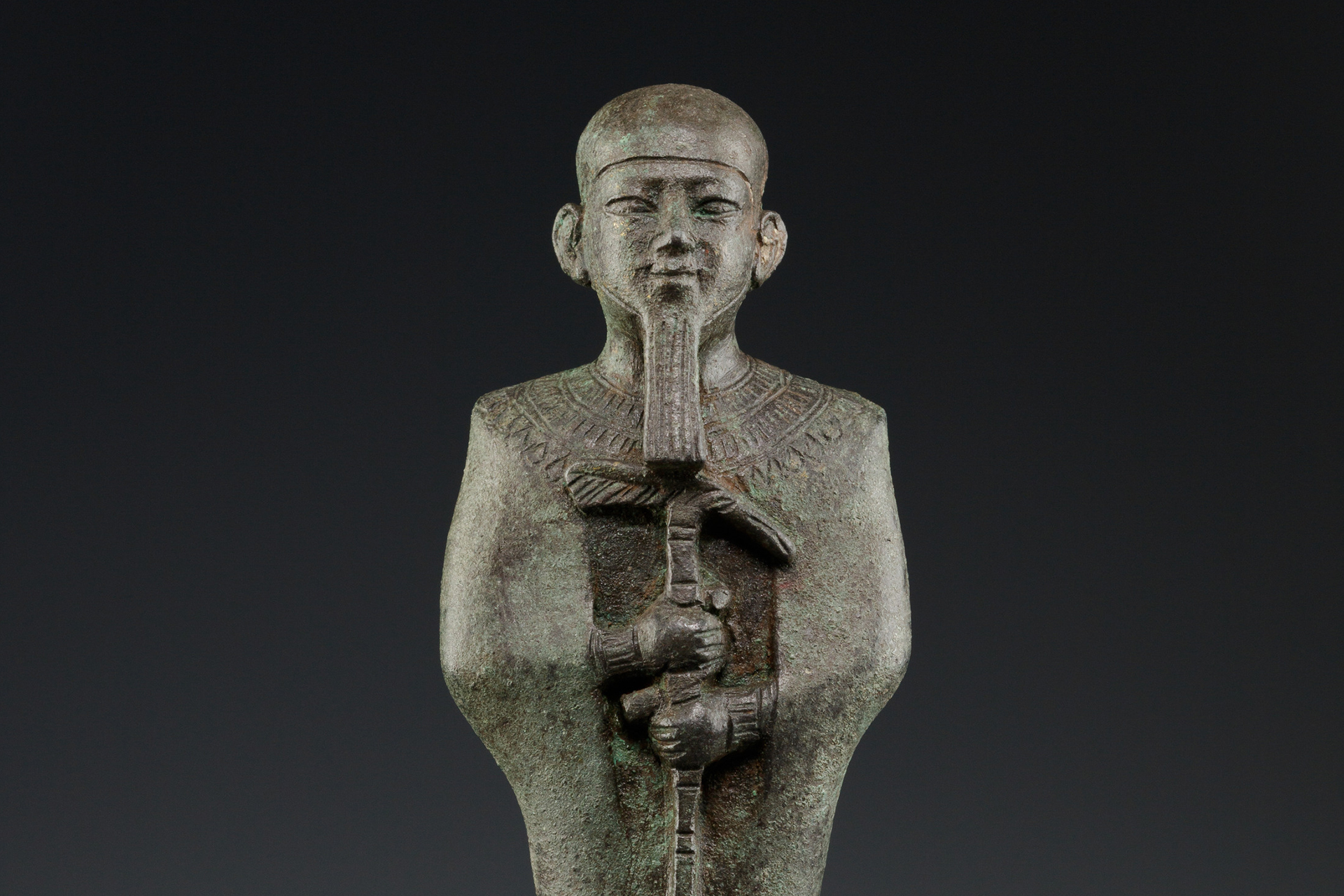
As the divine creator of all other gods, Ptah was honored as the patron of artisans and architects, and was credited with the invention of masonry. The renowned architect Imhotep even claimed descent from him.
Ptah was also closely associated with the sacred Apis bull, which resided in his temple at Memphis. The city’s role as his cult center not only spread his worship across Egypt but also made his temple a traditional setting for royal coronations.


